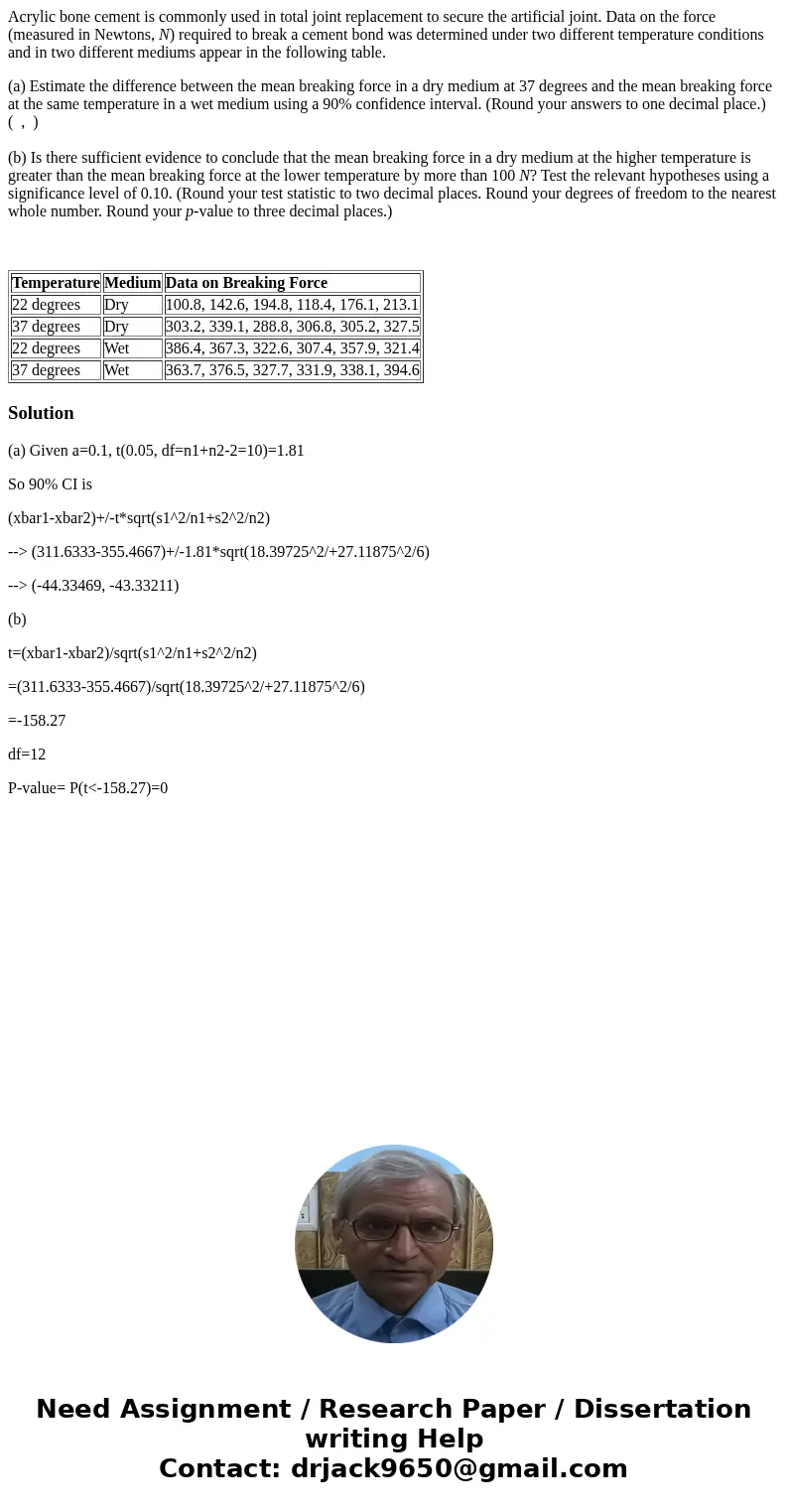Acrylic bone cement is commonly used in total joint replacem
Acrylic bone cement is commonly used in total joint replacement to secure the artificial joint. Data on the force (measured in Newtons, N) required to break a cement bond was determined under two different temperature conditions and in two different mediums appear in the following table.
(a) Estimate the difference between the mean breaking force in a dry medium at 37 degrees and the mean breaking force at the same temperature in a wet medium using a 90% confidence interval. (Round your answers to one decimal place.)
( , )
(b) Is there sufficient evidence to conclude that the mean breaking force in a dry medium at the higher temperature is greater than the mean breaking force at the lower temperature by more than 100 N? Test the relevant hypotheses using a significance level of 0.10. (Round your test statistic to two decimal places. Round your degrees of freedom to the nearest whole number. Round your p-value to three decimal places.)
| Temperature | Medium | Data on Breaking Force |
| 22 degrees | Dry | 100.8, 142.6, 194.8, 118.4, 176.1, 213.1 |
| 37 degrees | Dry | 303.2, 339.1, 288.8, 306.8, 305.2, 327.5 |
| 22 degrees | Wet | 386.4, 367.3, 322.6, 307.4, 357.9, 321.4 |
| 37 degrees | Wet | 363.7, 376.5, 327.7, 331.9, 338.1, 394.6 |
Solution
(a) Given a=0.1, t(0.05, df=n1+n2-2=10)=1.81
So 90% CI is
(xbar1-xbar2)+/-t*sqrt(s1^2/n1+s2^2/n2)
--> (311.6333-355.4667)+/-1.81*sqrt(18.39725^2/+27.11875^2/6)
--> (-44.33469, -43.33211)
(b)
t=(xbar1-xbar2)/sqrt(s1^2/n1+s2^2/n2)
=(311.6333-355.4667)/sqrt(18.39725^2/+27.11875^2/6)
=-158.27
df=12
P-value= P(t<-158.27)=0

 Homework Sourse
Homework Sourse